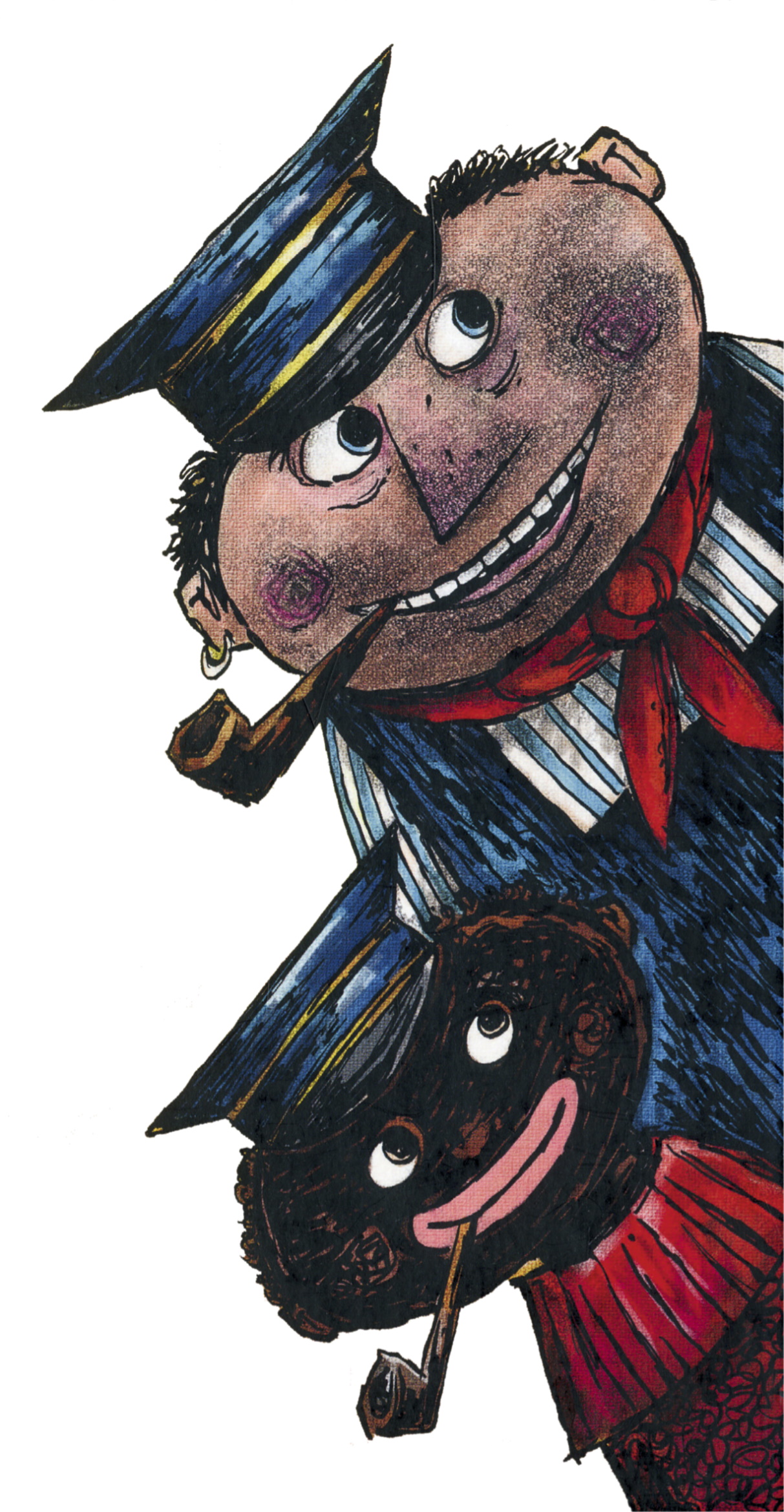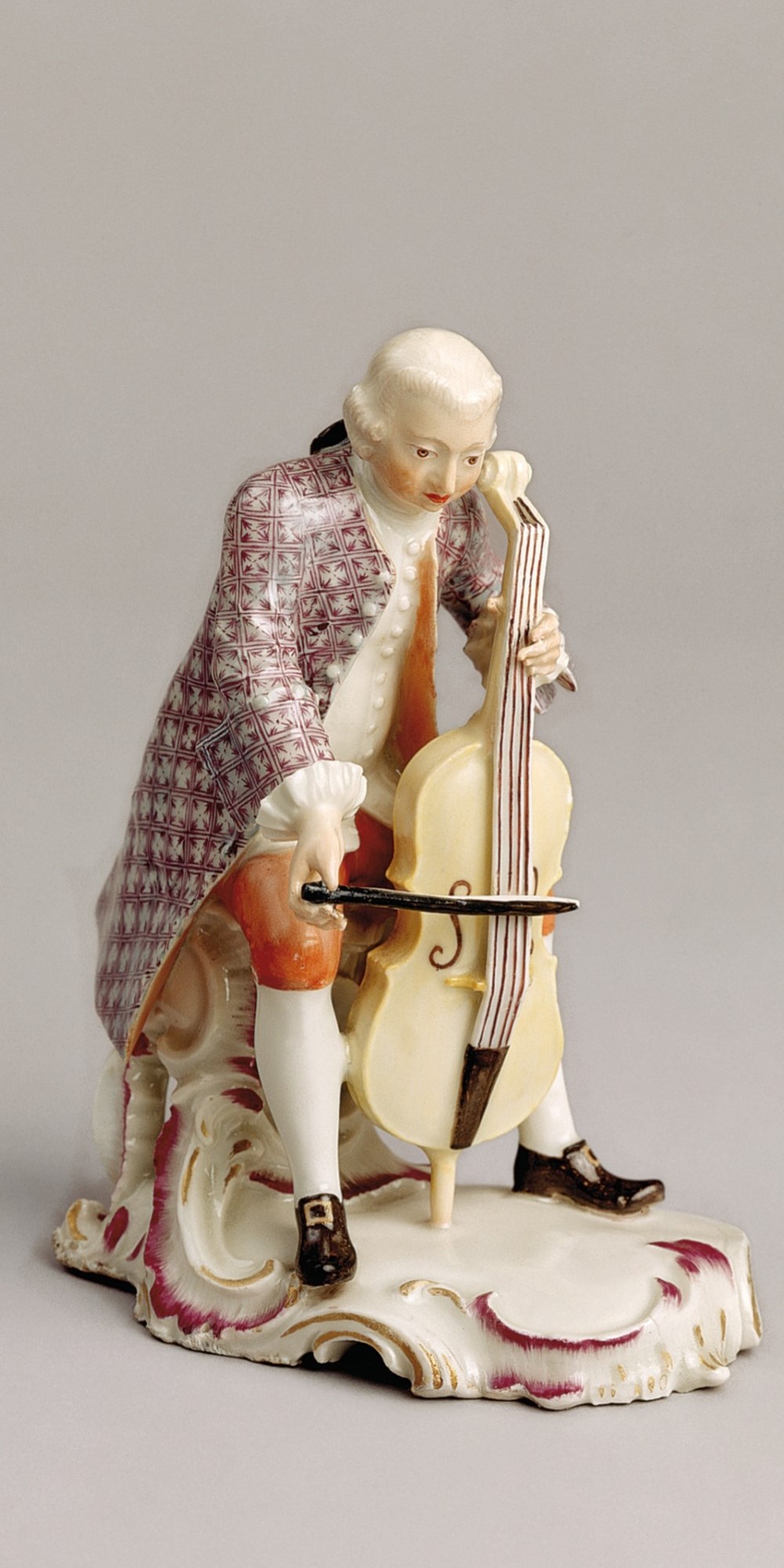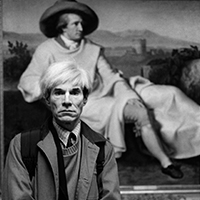2023
Fantastic trip with Jim Knopf, Bastian and Momo
Michael Ende - Images and stories
24.09.2023 - 14.01.2024
Ride through fantasies on the lucky dragon Fuchur, meet the childlike empress, sit in the attic with Bastian, accompany Momo on the run from the time thieves, brew the satanarchaeolügenialkohöllisch wishing punch or appoint the illusory giant Tur Tur as a lighthouse with Jim Button and Lukas. These world-famous stories have been inspiring and touching for decades. Fantasy and reality meet again and again and one thing is clear: It's never too late to dive into the masterpieces of Michael Ende!
A wide variety of illustrators and draughtsmen have translated Ende's literary cosmos of fantastic figures and heroic figures into visual worlds that can be experienced visually. F. J. Tripp, who also gives shape to Otfried Preußler's robber Hotzenplotz, creates icons of book art with Jim Knopf, Lukas and Emma. Regina Kehn develops the crazy ensemble of characters of the wishing punch and Roswitha Quadflieg gives the Neverending Story the legendary initials. On the occasion of the book's 40th anniversary, it is the artist Sebastian Meschenmoser who gives this world-famous story a new appearance. The resulting colorful oil paintings can be seen in the exhibition.
The artists are also accompanied by a wide variety of drawing styles, techniques and visual languages, so that the impressive overview shows not only Michael Ende's extensive oeuvre, but also icons of illustration art. On the basis of more than 300 original drawings, paintings and book editions, this grandiose pictorial world can be discovered for the first time in an exhibition in Oberhausen.
In addition, a separate exhibition area is dedicated to the painter and father of Michael Endes, Edgar Ende, with paintings and drawings. Other guests include hero Michael Ende's puppets from the Düsseldorf Marionette Theatre.
Many of Ende's stories have been transferred to other media: audio books and plays, theatre, musical theatre and puppet show adaptations, film and cartoons as well as merchandising products also bear witness to the immense popularity of the characters.
The exhibition is supported by the Stadtsparkasse Oberhausen and the Freundeskreis der LUDWIGGALERIE. The cultural partner is WDR 3.
IT’S A PASSION! We proudly present:
Die Porzellane aus der Sammlung Ludwig und das Beste aus 25 Jahren LUDWIGGALERIE Schloss Oberhausen
14. Mai bis 17. September 2023
Die LUDWIGGALERIE Schloss Oberhausen feiert silbernes Jubiläum und lädt dazu einen Sammlungsschwerpunkt ihrer Namensgeber ins Ruhrgebiet ein! Erstmals wird die erlesene und originelle Porzellansammlung von Peter und Irene Ludwig umfangreich in Oberhausen vorgestellt, mit einem Thema, das bestens hierher passt: der Darstellung von Berufen.
Über Jahrzehnte hat das Aachener Mäzenenpaar Porzellan gesammelt und besondere Freude an der Darstellung menschlicher Tätigkeiten gehabt. Vor allem das 18. Jahrhundert liebt es, den Bauern und den Quacksalber, die Hirtin und den Schneider, die Hutverkäuferin und den Tanzmeister, die Columbine und den Soldaten in feinstem Meißener Porzellan zu zeigen.
Als große Tischdekorationen werden diese niederen Berufsstände bei adeligen Festen zum Amüsement zusammengestellt. Die höfische Gesellschaft liebt Maskenbälle und ländliche Feste, die sogenannten fêtes champêtres, und schlüpft bei diesen gern selbst in das Kostüm der Hirtin und des Schäfers.
Für die Zerstreuung bei Banketten übernehmen die kostbaren Porzellane die Rolle der Anregung. Aber auch über die eigentliche Darstellung hinaus können Szenerien und Figurengruppen stehen. Die Schnitterin ist der personifizierte Sommer und kann als Dank stehen, für eine reiche Ernte. In Verbindung mit weiteren
Figuren wird sie zum Symbol der Erde bei den vier Elementen. Im Jahreszeitenzyklus symbolisiert sie den Sommer. Solche Mehrdeutigkeiten lassen die Figuren vielfach zum Einsatz kommen. Heute wird dieses „weiße Gold“, wie das Porzellan auch genannt wurde, in Bamberg aufbewahrt.
Neben einer Würdigung von Peter und Irene Ludwig gibt es auch den Blick zurück auf die letzten 25 Jahre. Zahlreiche Ausstellungen mit Beständen aus der umfangreichen Sammlung Ludwig konnten realisiert werden, ebenso wie Präsentationen zu Comic und Karikatur, zur Fotografie und den für das Ruhrgebiet so bedeutenden Landmarken. Ein Best-of wird während der Laufzeit prämiert.
BARBARA KLEMM Schwarz-Weiß ist Farbe genug – Fotografien 1967 bis 2019
22. Januar bis 7. Mai 2023
Mit Barbara Klemm stellt die LUDWIGGALERIE eine der bedeutendsten Fotografinnen der Nachkriegszeit vor. Ihre eindrucksvollen Schwarz-Weiß-Bilder dokumentieren in über fünf Jahrzehnten Menschen und Ereignisse in Deutschland und der Welt. Als Redaktionsfotografin arbeitet Klemm von 1970 bis 2005 für die Frankfurter Allgemeine Zeitung FAZ und bereist nicht nur das geteilte Deutschland, sondern auch vier Kontinente.
Zahlreiche ihrer Fotografien zählen heute zu den Ikonen der Lichtbildgeschichte und stehen für historische Momente wie die Studentenrevolten, den sozialistischen Bruderkuss oder die Wiedervereinigung.
In einem Künstlerhaushalt aufgewachsen, ihr Vater war der Karlsruher Maler Fritz Klemm, ist ihr schon früh ein besonderer Blick für Komposition und Struktur mitgegeben worden. In vielen ihrer Inszenierungen spiegeln sich gute Kenntnisse der Kunstgeschichte und ein empathischer Zugang zu den Menschen. Ihre Bildnisse von Künstlerinnen und Künstlern weisen sie als große Porträtistin aus.
Fantastic trip with Jim Knopf, Bastian and Momo
Michael Ende - Images and stories
24.09.2023 - 14.01.2024
Ride through fantasies on the lucky dragon Fuchur, meet the childlike empress, sit in the attic with Bastian, accompany Momo on the run from the time thieves, brew the satanarchaeolügenialkohöllisch wishing punch or appoint the illusory giant Tur Tur as a lighthouse with Jim Button and Lukas. These world-famous stories have been inspiring and touching for decades. Fantasy and reality meet again and again and one thing is clear: It's never too late to dive into the masterpieces of Michael Ende!
A wide variety of illustrators and draughtsmen have translated Ende's literary cosmos of fantastic figures and heroic figures into visual worlds that can be experienced visually. F. J. Tripp, who also gives shape to Otfried Preußler's robber Hotzenplotz, creates icons of book art with Jim Knopf, Lukas and Emma. Regina Kehn develops the crazy ensemble of characters of the wishing punch and Roswitha Quadflieg gives the Neverending Story the legendary initials. On the occasion of the book's 40th anniversary, it is the artist Sebastian Meschenmoser who gives this world-famous story a new appearance. The resulting colorful oil paintings can be seen in the exhibition.
The artists are also accompanied by a wide variety of drawing styles, techniques and visual languages, so that the impressive overview shows not only Michael Ende's extensive oeuvre, but also icons of illustration art. On the basis of more than 300 original drawings, paintings and book editions, this grandiose pictorial world can be discovered for the first time in an exhibition in Oberhausen.
In addition, a separate exhibition area is dedicated to the painter and father of Michael Endes, Edgar Ende, with paintings and drawings. Other guests include hero Michael Ende's puppets from the Düsseldorf Marionette Theatre.
Many of Ende's stories have been transferred to other media: audio books and plays, theatre, musical theatre and puppet show adaptations, film and cartoons as well as merchandising products also bear witness to the immense popularity of the characters.
The exhibition is supported by the Stadtsparkasse Oberhausen and the Freundeskreis der LUDWIGGALERIE. The cultural partner is WDR 3.

IT’S A PASSION! We proudly present:
Die Porzellane aus der Sammlung Ludwig und das Beste aus 25 Jahren LUDWIGGALERIE Schloss Oberhausen
14. Mai bis 17. September 2023
Die LUDWIGGALERIE Schloss Oberhausen feiert silbernes Jubiläum und lädt dazu einen Sammlungsschwerpunkt ihrer Namensgeber ins Ruhrgebiet ein! Erstmals wird die erlesene und originelle Porzellansammlung von Peter und Irene Ludwig umfangreich in Oberhausen vorgestellt, mit einem Thema, das bestens hierher passt: der Darstellung von Berufen.
Über Jahrzehnte hat das Aachener Mäzenenpaar Porzellan gesammelt und besondere Freude an der Darstellung menschlicher Tätigkeiten gehabt. Vor allem das 18. Jahrhundert liebt es, den Bauern und den Quacksalber, die Hirtin und den Schneider, die Hutverkäuferin und den Tanzmeister, die Columbine und den Soldaten in feinstem Meißener Porzellan zu zeigen.
Als große Tischdekorationen werden diese niederen Berufsstände bei adeligen Festen zum Amüsement zusammengestellt. Die höfische Gesellschaft liebt Maskenbälle und ländliche Feste, die sogenannten fêtes champêtres, und schlüpft bei diesen gern selbst in das Kostüm der Hirtin und des Schäfers.
Für die Zerstreuung bei Banketten übernehmen die kostbaren Porzellane die Rolle der Anregung. Aber auch über die eigentliche Darstellung hinaus können Szenerien und Figurengruppen stehen. Die Schnitterin ist der personifizierte Sommer und kann als Dank stehen, für eine reiche Ernte. In Verbindung mit weiteren
Figuren wird sie zum Symbol der Erde bei den vier Elementen. Im Jahreszeitenzyklus symbolisiert sie den Sommer. Solche Mehrdeutigkeiten lassen die Figuren vielfach zum Einsatz kommen. Heute wird dieses „weiße Gold“, wie das Porzellan auch genannt wurde, in Bamberg aufbewahrt.
Neben einer Würdigung von Peter und Irene Ludwig gibt es auch den Blick zurück auf die letzten 25 Jahre. Zahlreiche Ausstellungen mit Beständen aus der umfangreichen Sammlung Ludwig konnten realisiert werden, ebenso wie Präsentationen zu Comic und Karikatur, zur Fotografie und den für das Ruhrgebiet so bedeutenden Landmarken. Ein Best-of wird während der Laufzeit prämiert.

BARBARA KLEMM Schwarz-Weiß ist Farbe genug – Fotografien 1967 bis 2019
BARBARA KLEMM Schwarz-Weiß ist Farbe genug – Fotografien 1967 bis 2019
22. Januar bis 7. Mai 2023
Mit Barbara Klemm stellt die LUDWIGGALERIE eine der bedeutendsten Fotografinnen der Nachkriegszeit vor. Ihre eindrucksvollen Schwarz-Weiß-Bilder dokumentieren in über fünf Jahrzehnten Menschen und Ereignisse in Deutschland und der Welt. Als Redaktionsfotografin arbeitet Klemm von 1970 bis 2005 für die Frankfurter Allgemeine Zeitung FAZ und bereist nicht nur das geteilte Deutschland, sondern auch vier Kontinente.
Zahlreiche ihrer Fotografien zählen heute zu den Ikonen der Lichtbildgeschichte und stehen für historische Momente wie die Studentenrevolten, den sozialistischen Bruderkuss oder die Wiedervereinigung.
In einem Künstlerhaushalt aufgewachsen, ihr Vater war der Karlsruher Maler Fritz Klemm, ist ihr schon früh ein besonderer Blick für Komposition und Struktur mitgegeben worden. In vielen ihrer Inszenierungen spiegeln sich gute Kenntnisse der Kunstgeschichte und ein empathischer Zugang zu den Menschen. Ihre Bildnisse von Künstlerinnen und Künstlern weisen sie als große Porträtistin aus.

Kontakt
LUDWIGGALERIE Schloss Oberhausen
Konrad-Adenauer-Allee 46
46049 Oberhausen
Tel 0208 4124928
Fax 0208 4124913



